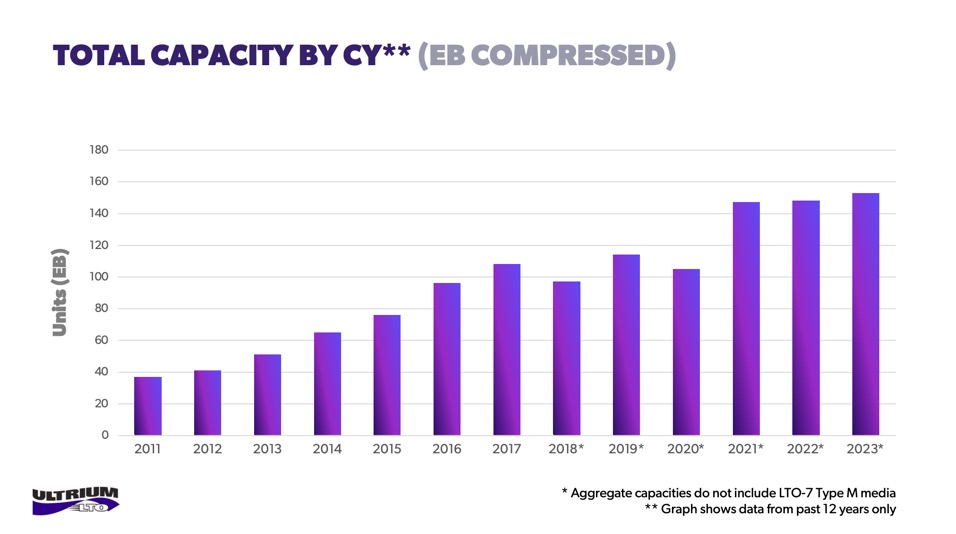
Magnetic tape is supposed to be dead as a digital storage medium. However, the people and organizations who use it apparently never got that memo. Manufacturers behind the Linear Tape-Open (standard) shipped 152.9 exabytes of magnetic tape capacity (compressed) in 2023. That’s actually 3.14 percent greater capacity than in 2022.
The three remaining LTO Program Technology Partners, HPE, IBM, and Quantum, provided the details in The Annual LTO Program Media Shipment Report. Some of that growth between 2022 and 2023 was attributed to “rapid data generation and the increased infrastructure requirements of hyperscalers and enterprises.” In other words, AI storage requirements.

When I began working in the computer industry in the mid-1990s, magnetic tape was thought to be on its way out as a digital storage medium. Zip drives were fading from the consumer market, and external hard drives were supposed to replace LTO tape for backup and archival purposes.
It looks like those newer technologies never sent magnetic tape to its grave, though. There are several reasons for this. Tape has a huge capacity, and taking it offline is easy. It’s also quite durable, and experience has shown the media can safely protect data for up to 30 years. Its proponents highly recommend tape for storing data that doesn’t need to be accessed very often.
For archival purposes and backups, tape can often be less expensive than disk drives, even the old-school rotational ones. It’s easily stored and kept safe from potential ransomware infections - working as cold storage. In terms of environmental concerns, research has shown tape storage is less polluting than HDDs and SSDs, too.
The major drawback is the reason tape is recommended only for data you don’t need to access very often. Access and restoral from a tape backup sometimes feels like it takes forever.
How does the amount of tape capacity shipped compare to hard drive capacity? We don’t have exact figures, but consider it like night and day. Seagate alone shipped 99 exabytes worth of hard drives just in the third quarter of 2024, and it is only one hard disk maker of many.






